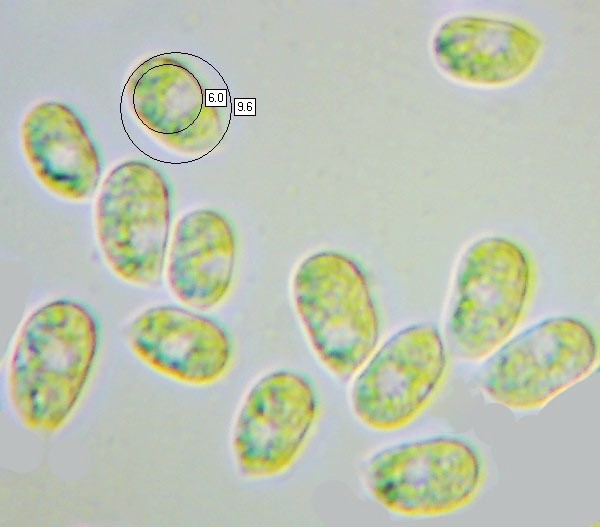Mycena crocata (Schrad.) P. Kumm. - Saffrondrop Bonnet
Phylum: Basidiomycota - Class: Agaricomycetes - Order: Agaricales - Family: Mycenaceae
Distribution - Taxonomic History - Etymology - Identification - Culinary Notes - Reference Sources
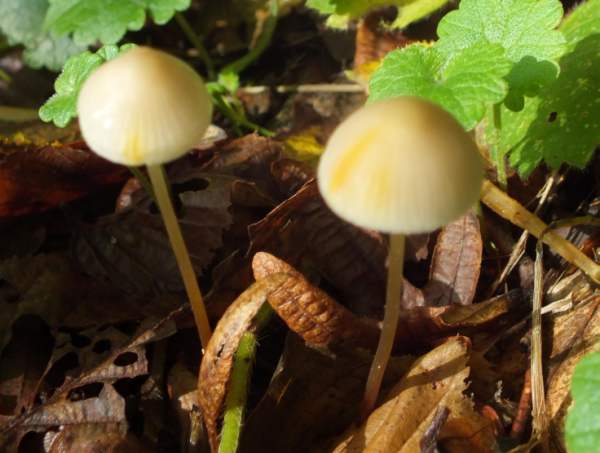
There is a host of drab looking bonnet mushrooms, Mycena species, which, at best, are merely 'interesting' because they tend to occur in unusual habits, such as sprouting from twigs on standing trees, but a few of the bonnet mushrooms are beautiful as individuals, and the Saffrondrop Bonnet is certainly one of them.
Distribution
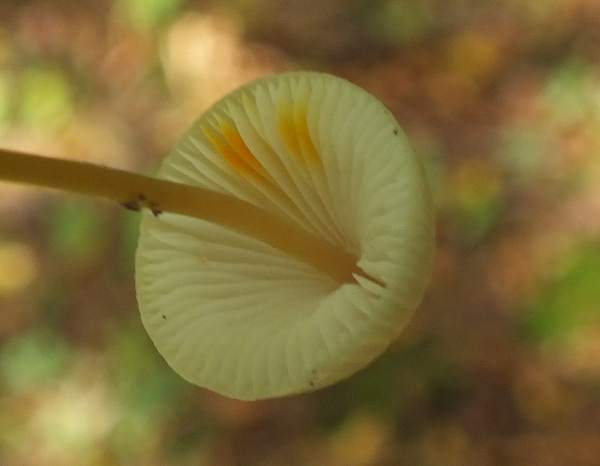
As you might expect from its English name, the Saffrondrop Bonnet is distinguished by random saffron-coloured splashes of colour on the surface of the caps and/or gills. This lovely little mushroom is an occasional find throughout Britain and Ireland, and it is widespread across northern and central mainland Europe, but in most countries it is far from common. Mycena crocata has also been recorded in North America.
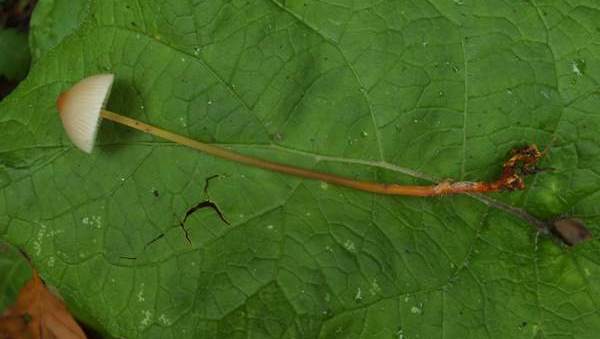
Taxonomic history
The basionym of this species was defined when, in 1794, German mycologist Heinrich Adolf Schrader (1767 - 1836) described the Saffrondrop Bonnet and named it Agaricus crocea. It was another German mycologist, Paul Kummer, who transferred this species to its present genus Mycena in 1871, thereby establishing the currently accepted scientific name Mycena crocata..
Synonyms of Mycena crocata include Agaricus crocata Schrad.
Etymology
The specific epithet crocata means saffron yellow.
Identification guide
 |
Cap0.5 to 2.5cm across; conical, becoming bell shaped and often eventually papillate or narrowly umbonate; silky smooth; translucent-striate towards margin; reddish brown or orange brown at centre, paler yellow-grey or whitish towards the margin but stained randomly with orange or orange-red spots. |
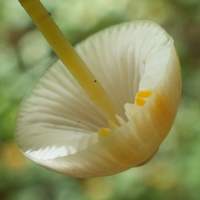 |
GillsAdnate with a decurrent tooth; whitish, stained randomly with orange or orange-red spots. Stem5 to 8cm long and 1 to 2mm in diameter; yellow to orange, becoming progressively redder towards the base; exudes a saffron-coloured latex or 'milk' when snapped and squeezed; no stem ring. |
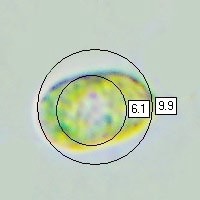 |
SporesElliopsoidal to sub-cylindrical, smooth, 5-10 x 5-7µm; amyloid. Spore printWhite. |
Odour/taste |
Odour faint, of bleach (ammonia) or of radish; taste not distinctive. |
Habitat & Ecological role |
Saprobic, in deciduous woodlands; particularly with beech trees (Fagus spp.). |
Season |
June to November in Britain and Ireland. |
Similar species |
There are many other smallish, bell-shaped fungi in the Mycena genus and they are difficult and sometimes impossible to identify without microscopic examination; however, the striking colouring of Mycena crocata at least helps separate it from most of the larger wood-rotting bonnet mushrooms. |
Culinary Notes
Because they are insubstantial (although reputed not to be toxix) Saffrondrop Bonnets are not generally considered as having any culinary value.
Reference Sources
Fascinated by Fungi, 2nd Edition, Pat O'Reilly 2016, reprinted by Coch-y-bonddu Books in 2022.
Penny Cullington, (Oct. 2013). British Mycenas - Brief Descriptions.
Giovanni Robich, (2003). Mycena d'Europa; Associazione Micologica Bresadola ; Vicenza : Fondazione Centro Studi Micologici.
British Mycological Society. English Names for Fungi
Dictionary of the Fungi; Paul M. Kirk, Paul F. Cannon, David W. Minter and J. A. Stalpers; CABI, 2008
Taxonomic history and synonym information on these pages is drawn from many sources but in particular from the British Mycological Society's GB Checklist of Fungi.
Acknowledgements
This page includes pictures kindly contributed by David Kelly.
Fascinated by Fungi. Back by popular demand, Pat O'Reilly's best-selling 450-page hardback book is available now. The latest second edition was republished with a sparkling new cover design in September 2022 by Coch-y-Bonddu Books. Full details and copies are available from the publisher's online bookshop...
